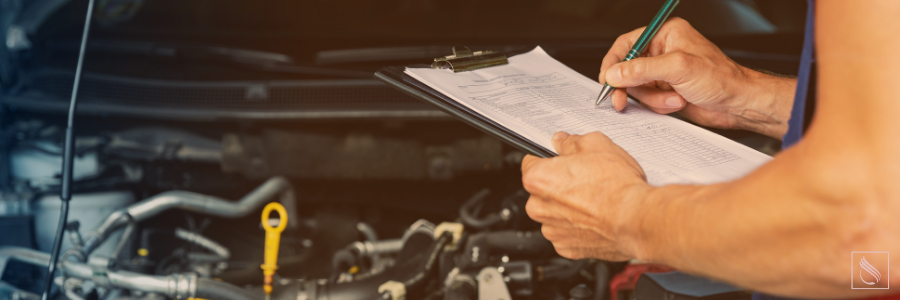Have your activities and events been canceled for health safety reasons? Has your ministry innovated and is no longer using their vehicles as often as before? There are many reasons your ministry vehicles may not be getting regular drivetime. Idle vehicles need a level of care to keep them in good working order, ready to be used by your ministry when needed.
All of the vehicles should be maintained following a regularly scheduled maintenance plan. Here are five tips for maintaining ministry vehicles when not driving them for an extended time.Drive the vehicle regularly
Vehicles left idle can develop problems that won’t be discovered until you need to drive them again. You do not have to go far. Start the engine and drive around for several miles (about five minutes) every two weeks to get the fluids in your vehicle moving and use the brakes a few times.When putting the vehicle into gear after the vehicle has been unused for some time, make sure the emergency brake is disengaged and press the brake pedal a few times. Check for issues such as the pedal going all the way to the floor or the brake indicator light coming on in the dashboard. This could indicate low brake fluid or a defective braking system, both of which would need to be repaired before the vehicle is driven.
Regularly driving a vehicle keeps the battery charged, the machinery lubricated, and prevents the brakes from rusting or fusing from disuse. Moving the car regularly also shows it is being monitored, which discourages vandalism and theft.
Cycle the gas tank
Vehicle fuels break down over time and, if left unrefreshed, will deteriorate to the point where a vehicle will struggle to operate. Eventually, the car may no longer start even with gas in the tank.To prevent fuel degradation to the point of doing damage to the engine, keep the tank filled and make sure you are cycling through a tank of gas every eight months. If you cannot cycle through a full tank of gas within eight months, consider adding a fuel stabilizer to help extend the fuel’s life. You should be able to buy fuel stabilizers from most auto parts stores.
Change the vehicle’s oil
Engine oil degrades over time. Without proper lubrication, the engine will be destroyed, and the vehicle will no longer run. Oil changes should be performed on all vehicles at least once a year, regardless of how many miles it has been since the last oil change.Check the maintenance records to learn the last time a vehicle’s oil was changed. Consult the vehicle owner’s manual to determine the maximum amount of time you can wait between oil changes. Have the vehicle’s oil changed and all fluids checked and filled to the appropriate levels at least once a year in keeping with your maintenance schedule and owner’s manual instructions.
Check the tire pressure
Tire pressure depletes at about one pound per square inch (PSI) a month. It is dangerous to drive when the air pressure of one or more tires is outside the recommended range. Check the air pressure and tread of the tires of any vehicle that has not been driven for an extended period.Tire pressure can be checked using a tire pressure gauge. Tires should all be filled to the appropriate pressure, as listed in the vehicle placard located in the driver’s door inner frame. Tread can be checked using a tire tread depth gauge available at most auto parts stores. United States law requires tread depth to be 2/32 of an inch or more to operate. Best practices are to replace tires with tread 4/32 of an inch or lower before driving the vehicle, especially in areas with frequent rain or snow.
Perform a vehicle self-inspection
After remaining out of daily operations for an extended period of time, a quick vehicle self-inspection can confirm a vehicle is safe and ready to return to normal operations. Adventist Risk Management, Inc. provides a free vehicle inspection form you can use to get started.Keep filled-out inspection forms on file with the vehicle’s maintenance record as documentation of regular inspections and upkeep. If your inspection uncovers anything unsafe, take the vehicle out of service until repairs are made, the vehicle passes inspection and is safe to resume normal ministry activities.
Conclusion
It can be easy to prioritize other ministry activities and maintenance needs until the time comes when we need to drive again when vehicles are not frequently required for normal operations.Leaving a vehicle untouched for too long can damage it and make it unsafe or permanently undrivable. This will cost your ministry money to repair or replace a vehicle. These funds could be used for furthering the work if the vehicle had been properly maintained. A few minutes spent driving every so often and a quick inspection before regular use can save your ministry the cost of purchasing a new or used vehicle. It can potentially prevent injury or loss of life resulting from driving a vehicle unsafe for operation. Use the five actions listed in this article to help keep ministry vehicles in good, safe working order when not in regular use.
References:
- Andrew Sullivan TIA-ATS (Tire Industry Association – American Tire Service)
- Consumer Reports: How to keep the gas fresh and protect your car during the coronavirus pandemic
- TireAmerica.com: Tire tread depth: why it matters and how to measure it


